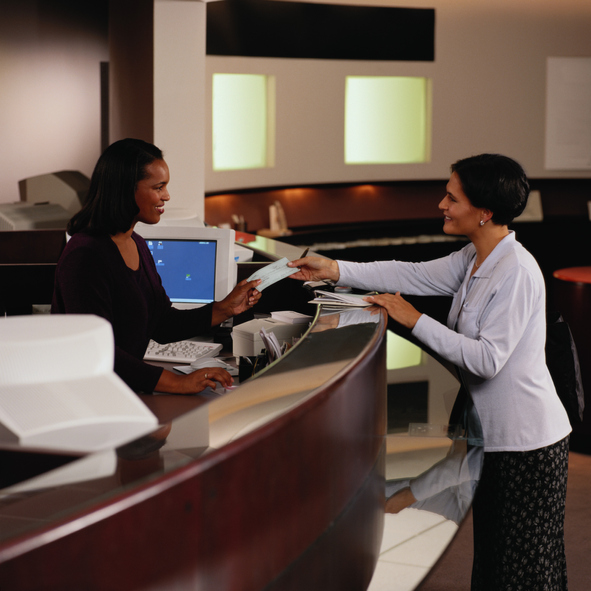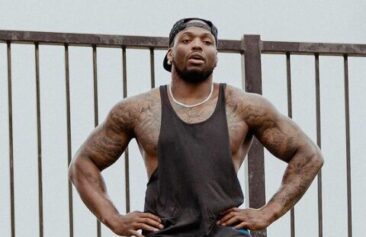First Independence Bank, the first Black financial institution in Minnesota, may have opened in April, but already, it is expanding its footprint in Twin Cities with a new branch — a move that is steeped in closing the racial wealth gap, a mission that many Black-led banks are currently addressing.

“The thing that I’m most excited about is being able to bring a sense of hope back, a sense of promise,” Damon Jenkins, senior vice president of First Independence Bank told KMSP Fox 9. “I think that access and the resources that we plan to offer just really helps this neighborhood and specifically this corridor with the healing process after everything that has taken place over the past two and half years.”
First Independence Bank opened to close some of the state’s equity gaps — many of which reflect national gaps. The most recent statistics from the Pew Research Center found that the wealth gap existing between white and Blacks in Minnesota ranks last with the highest median income gap in the United States with its Black population ranking 48th in income.
A Closer Look At First Independence Bank
The financial institution is new to Minnesota’s Twin Cities of Minneapolis and Saint Paul but the financial institution has been in operation since 1970. The bank was opened in Detroit just two years after Dr. Martin Luther King’s assassination led to riots throughout the city. There are currently three branches within the Detroit metropolitan area. First Independence Bank ranks as the seventh-largest Black financial institution in the United States. Its expansion in the Twin Cities area speaks to closing the wealth gap within the United States. According to the Federal Reserve, white Americans possess 87 percent of the wealth in the United States as compared to Black Americans’ 4.4 percent.
The Need for Black-Owned Banks In The United States
The wealth gap in the United States exists for many reasons, including lack of access to education, homeownership, and financial literacy. And although there are only 17 Black-led banks in the United States, these institutions could support Black Americans in closing the wealth gap.
According to a 2021 Federal Reserve report, 40 percent of Black Americans are either underbanked or unbanked. An estimated 27 percent of Black households are underbanked–possessing a bank account but still relying on alternative financial services such as payday loans and check cashing services to support their finances. In addition, 13 percent are unbanked meaning they do not possessing a checking, savings or money market account. These households rely on alternative financial services such as pawn shops, payday loans and check cashing businesses to manage their finances. Yet these alternatives come with fees and hefty interest rates, further deepening the wealth gap. Compared to the overall population, 16 percent of Americans were underbanked and 6 percent were unbanked.
By offering services and bank accounts that provide access to people who have not been included in the financial industry, Black-owned banks can help end many Black Americans’ disadvantages.
“It’s us understanding [the problems] and being able to bring the resources to [provide] programs that have national effects,” Kevin Cohee, chairman and CEO of OneUnited Bank, a Black-owned bank told Next Advisor. “We can take on [topics like] financial literacy because when we’re unequivocally Black, we can communicate to Black Americans in a way where something like financial literacy becomes real.”
Why Bank at Black Banks
There has been a deep-seated mistrust by many Black Americans of financial institutions. And it is not without reason. Banking While Black remains an issue. “Banking While Black,” the phenomenon of being racially profiled at banks because of skin color, is actually the subject of a new book by New York Times finance reporter Emily Flitter. The book, “The White Wall: How Big Finance Bankrupts Black America,” focuses on the discriminatory practice of banks and interviews real-life victims, such as “Black Panther” director Ryan Coogler. Earlier this year, Coogler was detained at a Bank of America branch when trying withdraw money from his own account after bank employees took him for a bank robber and called police.
One of the enticements of doing business with a Black bank is the lower probability of having a Banking While Black experience.
Also, Black entrepreneurs and potential homeowners continued to get denied for loans by larger banks.
The denial rate for mortgage applications is twice that for Black borrowers of the overall population, found a 2022 report from LendingTree. And, less than 47 percent of financing applications filed by Black business owners get approved, according to data made available from the U.S. Federal Reserve. If a Black founder is approved, they most likely will not get full financing, The Guardian reported.
Black-owned banks “make capital more accessible because they approve a higher percentage of loans to Black applicants than other banks,” found the Brookings Institution in 2021. But because Black-owned banks have fewer assets, their impact to funding is limited.
A Resource To Link Black Banks To Black Communities
Although Black-led institutions can empower Black communities, it is essential to note that there are only 17 banks in the United States.
BankBlack USA is also stepping up to support the work of Black-led financial institutions. The organization is raising awareness of the significant role Black banks have the power to play within Black American communities. BankBlack USA lists specific financial institutions that can support Black Americans with a general bank account to mortgages, business funding and even personal loans.
“People are paying attention to Black-owned business banks,” Stephone Coward, co-founder of BankBlack USA, told Finurah. “We need to go in the direction of supporting our community.”




